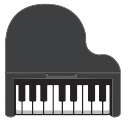Diplomatic notes
A strange sight would open before us, if suddenly we were at a diplomatic reception in some ancient state where the audience of the Japanese envoy was taking place. Having unfolded his credentials, the diplomat representing the interests of the Land of the Rising Sun appealed to the foreign government not with speech, but … with singing.
Therefore, in ancient Japan the expression “diplomatic note” had a double meaning: it was both a document and a kind of musical work.
It is difficult to say if the ambassador sang solo or under accompaniment. Who knows, maybe his exit was accompanied by playing on the “crackling” oboe – a national Japanese instrument, like a smoking pipe, consisting of a sea shell and a mouthpiece.
We do not know what else: what Japanese envoys sang and how it was recorded on paper. This music is unknown today because we do not know the notation note that was used in ancient Japan. Although, for example, we have reached the notation recording system, adopted in another country of the ancient east – India.

Here, in the homeland of the legendary Nareda and Brahma, a note of music arose long before it was invented in Europe. Ancient Indian scientists have elaborated a very complex theory of music in detail , largely anticipating the modern. Suffice it to say that gamma also consisted of seven notes. Each note, as the Indian believed, reflected a certain state of mind.
In India everything that was connected with music was poeticized. But even knowing this, the bright imagery and flamboyance of the language, which wrote the largest theoretical works of ancient Indian musicologists, cannot but surprise. “Mirror of Scales and Melody”, “Sea Effects”, “Enthusiasm of Societies” – these are some titles of treatises on music. And in the “Holy Book of Narayan” the theory of music is presented … in verse – the fact, apparently, is unique in the whole history of music. In it, the reader could find chapters on singing, pantomime and playing an instrument called wine. In India, as elsewhere in the ancient world – we already mentioned this – music was inextricably connected with pantomime, poetry, and dances.
It is characteristic that the very word “music” – in Hindu “sang it” – means the unity of singing, instrumental music and dance.
A kind of antipodes of flowery, poetic expressions, which set out the theoretical foundations of music by the ancient Hindus, were “grounded” (as we will see, both figuratively and literally) the musical terms of the ancient Arabs.
“Long rope”, “short rope”, “carnations” – is not it true, it is difficult to assume that these words have anything to do with music? And yet these are the names of the oldest Arabic rhythms. All of them remind us of the accessories used for breaking and removing the tent. After all, the birth of musical traditions among the Arabs dates back to those distant times when they were still nomads.
It is they who meet innovations that have played an important role in the history of music. For example, it is believed that it was in the Arab East that string instruments began to be played with the help of a bow. One such instrument was the rebab (rabab).
So the musical traditions of the ancient world developed: for some peoples – Arabs, Hindus – the greatest preference was given to string instruments; in others, the wind and shock have acquired special distribution and development. To get acquainted with some of them, we will move to another country of the ancient east – China.
Semi-dark, low-ceilinged room. In the depth, near the wall with an image of ancestors, there is a “table of fragrances”. On it are flowers, burning candles, vessels with smoking incense.
On each side of the table is a small ensemble. To the left, facing east is the performer on the timpani, then the player for tau-ku – a special drum, behind them – playing flutes. On the right, always facing west, is “striking the bell”, next to the player on Pan’s flute and, finally, a musician holding a tool similar to a large kettle-sheng. Sounds music. Suddenly, sounds stop, and everyone silently turns to the “table of fragrances”. There passes a moment, another … On a sign of the musician with a Shan the performers takes the former position, and again the sounds of music are heard.
And now let’s look at one of the tools – sheng. Despite the primitive construction.
(Shan was made from a pumpkin into which bamboo tubes were inserted in different lengths), it served as a kind of “first violin” – the rest of the instruments were tuned to it. In fact, sheng was one of the earliest ancestors of the organ, bayan that is one of the first multi-soned wind instruments. This suggests that while almost everywhere in the ancient world, music was monophonic, in ancient Chinese music there were already elements of polyphony.
A lot of valuable achievements have come to the musical culture from the ancient east. But the country that had a decisive influence on all subsequent development of art was Hellas, as the ancient Greeks called their country.
